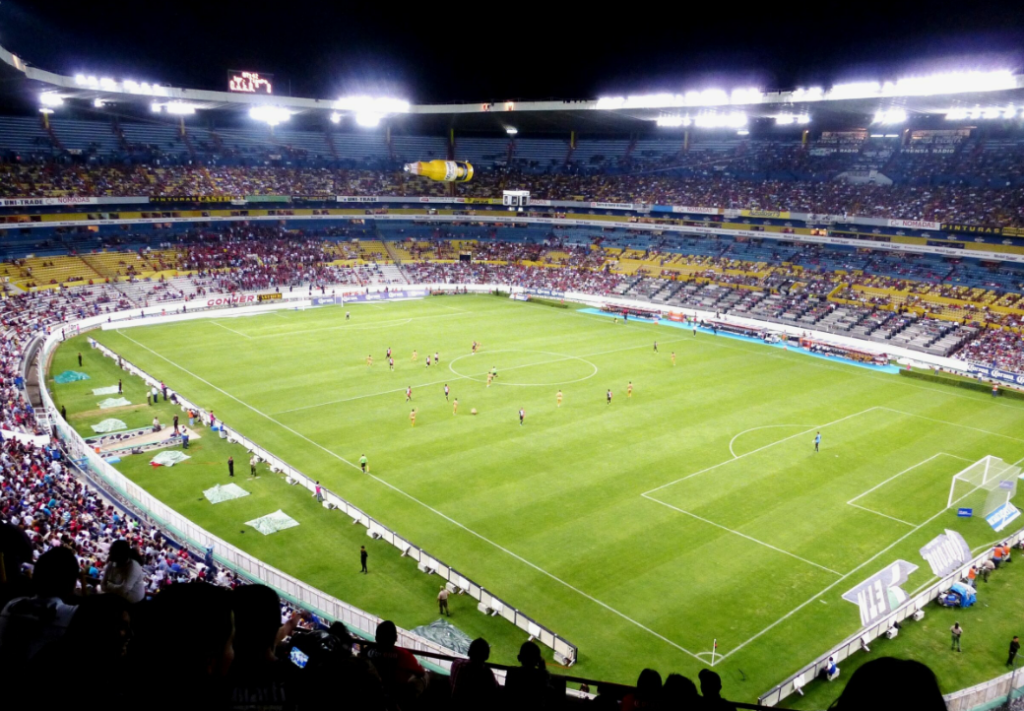A soccer field is typically around 100-130 yards long and 50-100 yards wide. Soccer fields vary in size but generally fall within these dimensions. The size of a soccer field is crucial for the game’s dynamics and player strategy. Understanding the field’s size helps players position themselves effectively, utilize space, and execute tactics efficiently. Whether it’s a professional game or a casual match, the dimensions of the soccer field play a significant role in shaping the gameplay.
From high school games to international tournaments like the World Cup, the size of the field impacts the pace, flow, and overall experience of the game. Knowing the standard dimensions of a soccer field is essential for players, coaches, and fans to fully appreciate and engage with the sport.
What is The Size of a Soccer field

History of Soccer Field Size
When discussing the history of soccer field size, it’s essential to understand the evolution of the dimensions and the impact of these changes. Over the years, the size of a soccer field has undergone various alterations, influenced by the game’s development and the governing bodies’ regulations. This has led to significant implications for the gameplay and the strategies employed by teams.
Evolution of Soccer Field Size
The evolution of soccer field size has been a dynamic process, with alterations made to accommodate the evolving nature of the sport. Initially, there were no standardized dimensions for soccer fields, leading to variations in size from one location to another. However, as the sport gained prominence and formalized rules were established, the need for consistent field sizes became apparent. This led to the introduction of standardized dimensions, ensuring uniformity across different venues.
Impact What is The Size of a Soccer field
The changes in soccer field size have had a profound impact on the game. Soccer field size in meters is now regulated by official bodies, ensuring that the dimensions meet specific criteria. These modifications have influenced the style of play, player positioning, and overall strategies employed during matches. Moreover, the impact of what is the size of a soccer field in feet has been significant, as it affects the dynamics of the game, emphasizing the need for adaptability and strategic acumen from players and coaches.
Standard Soccer Field Size
Understanding the standard size of a soccer field is essential for players, coaches, and fans alike. The dimensions and regulations set by governing bodies ensure consistency and fairness in the game. Let’s delve into the FIFA regulations and key measurements that define the standard soccer field size.
Fifa Regulations
FIFA, the international governing body of football, sets specific regulations for the size of a soccer field. According to FIFA guidelines, the standard soccer field must adhere to precise measurements to maintain uniformity across different venues.
Key Measurements
The key measurements outlined by FIFA for a standard soccer field include the length, width, and other essential markings. Here are the standard measurements:
- Field Length: Approximately 100 to 130 meters (110 to 140 yards)
- Field Width: Approximately 64 to 75 meters (70 to 80 yards)
- Goal Size: 7.32 meters (8 yards) wide and 2.44 meters (8 feet) high
- Penalty Area: Extends 16.5 meters (18 yards) from the goal line and 40.3 meters (44 yards) wide
- Center Circle: Has a radius of 9.15 meters (10 yards)
Variations In Soccer Field Size
Soccer field sizes can vary, but the standard size for a professional soccer field is between 100-130 yards long and 50-100 yards wide. FIFA regulations state that the length must be greater than the width.
Soccer is one of the most popular sports in the world, played in various countries and regions. While the basic rules of the game remain the same, the size of the soccer field can differ depending on several factors. In this section, we will explore the variations in soccer field size, including regional differences and non-standard field sizes.
Regional Differences
In general, the size of a soccer field is standardized by the International Football Association Board (IFAB), which sets guidelines for pitch dimensions. However, there are some variations in the size of soccer fields in different regions. For example, in North America, the dimensions of a soccer field are often larger than in Europe. Major League Soccer (MLS) requires a minimum field size of 70 yards wide and 110 yards long, while the English Premier League requires a minimum field size of 50-100 yards wide and 100-130 yards long.
Non-standard Field Sizes
While most soccer fields follow the IFAB guidelines, there are some non-standard field sizes used for different levels of play. For example, youth soccer fields may be smaller than professional fields, with a minimum size of 30 yards wide and 50 yards long. Indoor soccer fields may also be smaller, with dimensions of around 180 feet by 90 feet. Additionally, some high school soccer fields may have non-standard dimensions due to space limitations. In conclusion, while the size of a soccer field is generally standardized, there are some variations depending on the region and level of play.
Influence on Game Dynamics
The size of a soccer field varies, but the standard dimensions for a professional field are between 100-130 yards in length and 50-100 yards in width. The size can also vary depending on the level of play, with some fields being slightly smaller for youth or indoor soccer.
Effect on Player Strategies
FIFA soccer field dimensions play a crucial role in shaping player strategies.
The size of the football field in square meters directly impacts how players position themselves and execute tactics.
Role of Field Size In Game Speed
Football field size in square meters influences the pace of the game significantly.
Smaller fields lead to faster gameplay, promoting quick passes and rapid transitions.
Larger fields, on the other hand, allow for more space and strategic movements.

Importance of Field Size In Player Development
The size of a soccer field is crucial for player development as it impacts their ability to cover ground, make tactical decisions, and develop technical skills. A larger field encourages players to improve their endurance and decision-making, while a smaller field enhances ball control and quick decision-making.
It is essential to consider the field size when designing training programs for players’ holistic development.
The size of a soccer field is a crucial factor in player development, as it directly impacts tactical awareness and youth training considerations. Understanding the importance of field size in player development is essential for coaches and players alike.
When it comes to youth training, the size of the soccer field plays a vital role in the players’ development. Smaller field sizes encourage more touches on the ball and foster quick decision-making skills. This, in turn, enhances the technical abilities of young players. On the other hand, larger field sizes allow players to develop their endurance and spatial awareness.
Tactical Awareness Impact
The size of the soccer field directly influences the tactical awareness of players. A smaller field promotes a quicker pace of play, requiring players to think and react rapidly. It encourages players to maintain compact formations and work on their defensive and offensive transitions. Conversely, a larger field size encourages players to exploit space and work on their positioning and movement.
Technological Advancements In Field Measurement
As the world of sports continues to evolve, so does the technology utilized for measuring and optimizing soccer fields. These advancements have revolutionized the way soccer fields are designed and maintained, ensuring precision and accuracy in every aspect of the field’s dimensions and layout.
GPS and Tracking Systems
GPS and tracking systems have transformed the way soccer fields are measured and maintained. These systems utilize satellite technology to accurately map out the dimensions of the field, ensuring that every line and boundary adheres to the official regulations. By incorporating GPS and tracking systems, groundskeepers and facility managers can ensure that youth soccer field dimensions and football field size in meters are precise and in line with professional standards.
Data Analysis For Field Optimization
Data analysis plays a crucial role in optimizing soccer fields for performance and safety. Groundskeepers can utilize data analysis tools to assess the wear and tear on the field, identify areas that require maintenance, and make informed decisions about field layout and dimensions. This technology ensures that the soccer field remains in top condition, providing a safe and optimal playing surface for athletes of all levels.
Future Trends In Soccer Field Size
Soccer field sizes by age vary, with professional fields being larger. The evolution of the game has led to discussions about potential changes in field dimensions to adapt to modern playing styles.
Potential Rule Changes
Adapting to modern playing styles may require considering rule changes regarding soccer field sizes to enhance gameplay dynamics and player performance.

Adaptation To Modern Playing Styles
As the sport progresses, there is a need to align soccer field dimensions with the demands of contemporary tactics and strategies employed by teams worldwide.
Conclusion
Understanding the size of a soccer field is crucial for players and fans. The dimensions vary for different levels of play, from youth to professional leagues. Knowing these measurements enhances the game experience and strategy. Explore the specifics to appreciate the beauty of the sport.
